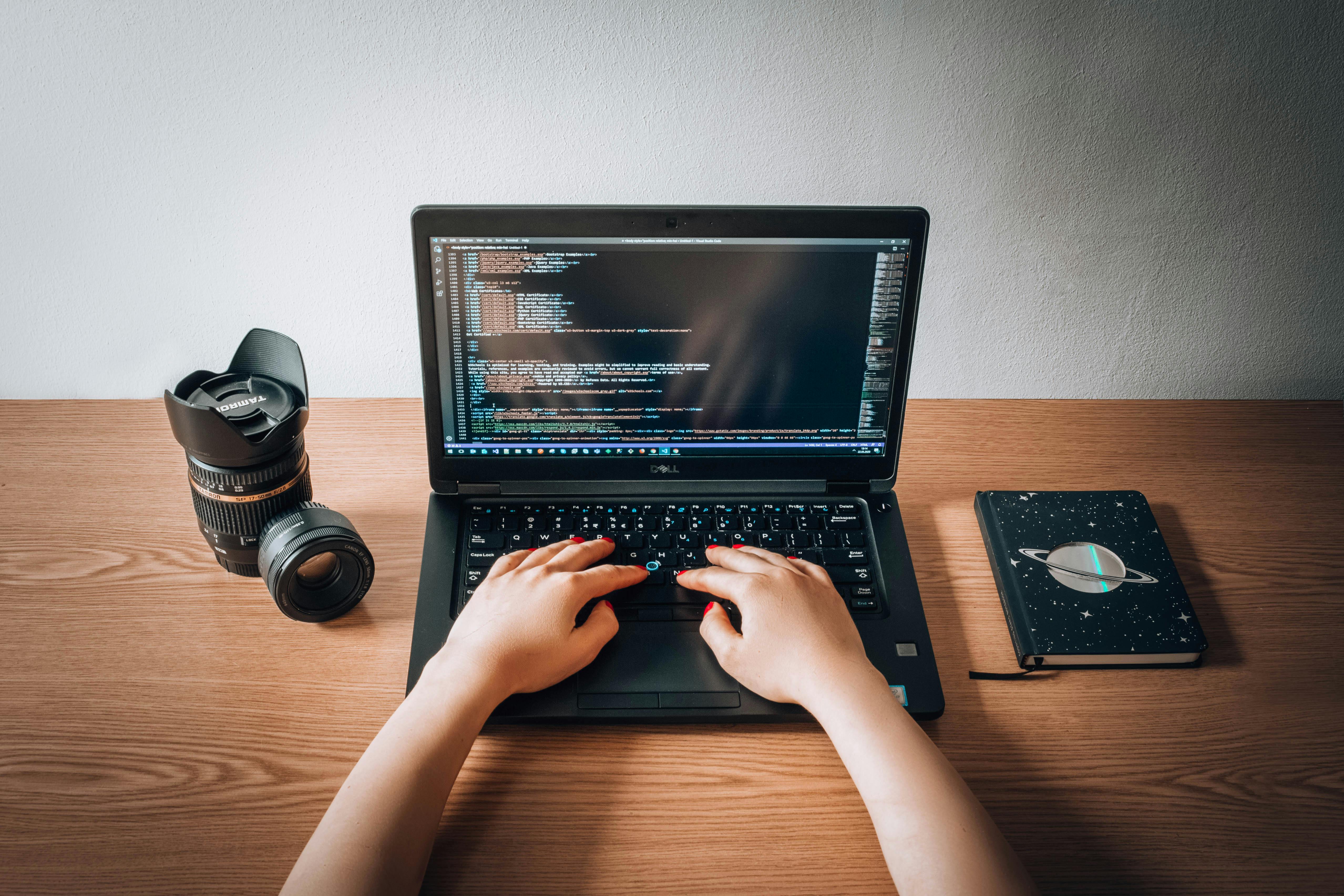Concerned about the safety of your personal information in stock trading apps? Every day, hackers attack financial platforms to access sensitive data. This blog explains how encryption safeguards your information and keeps cybercriminals away.
Stay with us because your data security is important.

Importance of Data Encryption in Stock Trading Apps
Data encryption protects sensitive information such as financial transactions and personal details. It stops hackers from intercepting or stealing this data during transmission between users and stock trading apps.
Without encryption, private information becomes fully exposed to cybercriminals.
Stock traders depend on secure platforms to safeguard their investments. Strong encryption fosters confidence by protecting user accounts against unauthorized access.For instance, traders exploring opportunities in nasdaq penny stocks under 10 cents rely on encrypted apps to execute transactions securely without risking personal or financial data exposure. As one cybersecurity expert once said.
Encryption converts readable data into a stronghold.
Key Data Encryption Standards
Encryption standards act like digital bodyguards, safeguarding sensitive stock trading data from unauthorized access. These methods rely on advanced algorithms to secure information during transactions and storage.
Data Encryption Standard (DES)
The Data Encryption Standard (DES) was once a critical foundation of cryptography. Created in the 1970s, this symmetric encryption algorithm secures data with a 56-bit key. It converts information into unreadable formats and permits only those with the correct key to interpret it.
While DES performed effectively for years, advancements in computing rendered it susceptible to brute-force attacks. Malicious actors could compromise its encryption by testing billions of keys at high speed.
Consequently, DES is now deemed obsolete for protecting financial transactions or confidential user data in stock trading platforms. Numerous systems have shifted to more robust options like Advanced Encryption Standard (AES).
Advanced Encryption Standard (AES)
Advanced Encryption Standard (AES) protects sensitive data in stock trading apps using symmetric encryption. It encrypts and decrypts information with a single key, making data travel safer between devices.
AES supports 128-, 192-, and 256-bit keys, with each level offering stronger security.
“AES balances speed and exceptional data protection for financial transactions.”
It defends against cyber threats while keeping performance impacts minimal. Stock trading platforms prefer AES because it safeguards user information like login details and transaction history without slowing down processes.
Triple DES (3DES)
Triple DES (3DES) encrypts data by applying the Data Encryption Standard algorithm three times. It uses three different keys in succession, making it much harder for attackers to break through.
This method increases security compared to single DES.
Stock trading apps make use of 3DES as it protects sensitive user information during financial transactions. Though strong, its slower performance can be a drawback in high-speed environments like trading platforms.
Elliptic Curve Cryptography (ECC)
Building on Triple DES, Elliptic Curve Cryptography (ECC) provides stronger encryption using smaller keys. It relies on complex mathematical curves to secure data effectively. This method is highly appreciated in stock trading apps due to its efficient design and reliable performance.
ECC secures sensitive information while consuming less computing power than other algorithms like RSA. Apps handling financial transactions benefit from ECC because it accelerates secure connections without compromising safety.
For traders, this means quicker app responses with strong protection for personal and financial data.
Twofish
Twofish is a fast and flexible encryption standard. It offers 128-bit block sizes and supports key lengths up to 256 bits. Experts consider it both secure and efficient for encrypting sensitive data like financial transactions in stock trading apps.
This algorithm evenly balances security with performance, making it suitable for high-speed environments.
Developed by Bruce Schneier in the late 1990s, Twofish has remained a reliable choice for protecting user privacy in digital applications. Its complex structure resists various forms of cyberattacks, ensuring strong data security against evolving threats.
Moving on, let’s look into symmetric encryption methods used in stock trading platforms.
Types of Data Encryption
Encryption comes in two main flavors, each with its own strengths. Understanding their roles can help protect your data during financial transactions.
Symmetric Encryption
Symmetric encryption uses a single key to encrypt and decrypt data. This shared-key method keeps the process straightforward yet efficient for securing financial transactions in stock trading apps.
Both parties must have access to the secret key, making it quicker than other methods.
However, managing this type of encryption on large scales can present challenges. If someone intercepts or steals the key, sensitive information becomes susceptible. Despite this risk, many systems still use symmetric encryption due to its rapid processing of large volumes of data.
Asymmetric Encryption
Asymmetric encryption uses two keys: one public and one private. The public key encodes data, while the private key decodes it. Only the owner of the private key can access sensitive information, ensuring robust protection.
Stock trading apps depend on this method to safeguard financial transactions and personal data. For instance, when users send login credentials or trade orders, asymmetric encryption shields them during transmission.
This lowers risks like hacking or unauthorized access by cybercriminals.

Benefits of Encryption in Stock Trading Apps
Encryption locks sensitive data like a vault, keeping prying eyes out. It builds trust with users who value safety and privacy in their financial dealings.
Securing Sensitive User Data
Stock trading apps manage a wealth of personal and financial information. Encrypting data ensures intruders cannot access or steal sensitive user details during online trades or transactions.
Strong encryption protocols like AES and ECC protect passwords, bank account numbers, and transaction histories from exposure.
Hackers often target vulnerable points in systems to access private files. Encrypted data functions like a secured safe; even if someone gains entry, the contents remain unreadable without the correct key.
Protecting this information not only prevents breaches but also builds trust between traders and platforms.
Preventing Unauthorized Access
Hackers often take advantage of weaknesses in systems to steal sensitive information. Encrypting all stored and transmitted data helps prevent these attempts by making the data inaccessible without proper keys.
Two-factor authentication (2FA) can provide an additional layer of defense. It requires traders to verify their identity using a second method, like a code sent via text or email. This approach significantly reduces the risk of unauthorized account access.
Enhancing Trust and User Confidence
Protecting data fosters trust between traders and stock trading apps. Robust encryption assures users that their personal information stays private, minimizing any concern of breaches or unauthorized access.
Financial transactions include confidential details, like account numbers and payment credentials. Encryption protects this information during transmission across networks. When users feel confident, they’re more inclined to depend on the app for regular trades and financial management.
Challenges in Implementing Encryption Standards
Balancing security with performance can feel like walking a tightrope for developers.
Performance Overheads
Encryption can slow down stock trading apps. Complex algorithms like AES or Triple DES require significant computing power to process financial transactions securely. This added strain may cause delays in data transmission or app responsiveness.
Strong encryption methods protect sensitive information but require more resources. For instance, real-time trades could experience lags due to the heavy load on servers managing secure transmissions.
Developers must find a balance between strong security and maintaining fast transaction speeds for users.
Key Management Complexities
Managing encryption keys can be like balancing on a tightrope. Stock trading apps handle massive amounts of sensitive data, and these keys serve as the locks and safes protecting that information.
Losing or exposing them threatens user privacy or financial security. The process requires strict organization to prevent unauthorized access.
Regularly rotating keys adds another layer of complexity. Keys must remain secure during generation, storage, and use. For stock trading apps, this often means incorporating hardware security modules (HSMs) or advanced software solutions for centralized management without sacrificing performance speed.
It’s a constant balancing act between protection and efficiency while adhering to compliance standards like GDPR or PCI DSS requirements.
Keeping Up with Evolving Threats
Hackers constantly find new ways to exploit vulnerabilities. Stock trading apps must adapt quickly to protect financial transactions and sensitive user information. Cybersecurity teams now face the challenge of predicting attacks before they occur.
New encryption algorithms like post-quantum cryptography are gaining attention to counter more advanced threats. Regularly reviewing encryption protocols is essential, as outdated methods leave systems exposed.
Without preventative measures, even strong defenses can fail against modern cyberattacks.
Best Practices for Data Encryption in Stock Trading Apps
Protecting user data demands consistent effort and vigilance. Implementing strong encryption methods can act like a steel vault for sensitive information.
Encrypt Data at Rest, in Transit, and in Use
Stock trading apps handle sensitive user data and financial transactions around the clock. Encrypting data at rest protects stored information, like account details or personal records, from attackers who might access devices or servers.
Strong encryption converts this static data into unreadable formats unless accessed with the right key.
Data in transit must also stay secure as it moves between users and servers. Encryption protocols like TLS prevent cybercriminals from intercepting login credentials or trade confirmations during transmission.
Protecting data in use safeguards active processes on trading platforms, such as real-time market analysis running within app memory. This layered approach reinforces a reliable security foundation.
Understanding strong encryption protocols is essential for any dependable system.
Use Strong Encryption Protocols
Strong encryption protocols protect sensitive user data and financial transactions in stock trading apps. Algorithms like AES-256, ECC, or Twofish safeguard information from cybercriminals.
These methods encode the data so only authorized users with decryption keys can access it. Reliable protocols also meet compliance standards like GDPR and PCI DSS.
Traders risk exposing personal information without strong encryption measures in place. Secure algorithms ensure hackers cannot exploit vulnerabilities, even if they intercept communication.
Using established encryption systems builds trust while maintaining security at every step of a transaction’s process.
Regularly Update and Patch Encryption Systems
Hackers adapt quickly. Outdated encryption systems are vulnerable to attacks. Regular updates address security gaps and enhance defenses against breaches. Stock trading apps manage sensitive financial transactions daily, making unaddressed system issues a significant cybersecurity risk.
Updating encryption protocols safeguards user privacy and ensures adherence to strict data security regulations like GDPR or PCI DSS. Delays in updates can jeopardize secure data transmission during trades.
Always prioritize timely updates to prevent potential threats before they occur.
Implement Robust Key Management Practices
Protect encryption keys as if they are the most critical part of your app’s security. Store them apart from encrypted data to reduce risks. Use hardware security modules (HSMs) or secure software-based solutions to manage and safeguard keys effectively.
Change encryption keys regularly, much like changing passwords to maintain security. Restrict access to these keys by implementing strict access controls for enhanced protection. Always securely eliminate old or unused keys to prevent leaks or unauthorized use.
Regulatory Requirements for Data Encryption
Data encryption in stock trading apps must meet strict privacy laws to protect users, so staying informed is crucial.
General Data Protection Regulation (GDPR)
GDPR is a European Union regulation that protects personal data. It applies to companies worldwide if they handle EU citizens’ information. Stock trading apps must follow GDPR to protect user data during financial transactions.
This regulation requires strict encryption practices for storing and transferring sensitive information, such as names or banking details. Non-compliance can lead to significant fines, reaching up to 20 million euros or 4% of annual revenue, whichever is higher.
Proper encryption helps meet these standards while shielding traders from cybersecurity risks.
Payment Card Industry Data Security Standard (PCI DSS)
PCI DSS protects financial transactions by establishing security guidelines for managing cardholder data. Stock trading apps are required to adhere to these standards to safeguard sensitive payment information during trades.
These guidelines include encrypting user data, restricting access, and consistently monitoring systems.
Failing to comply can result in significant fines or legal complications, affecting a company’s reputation. By following PCI DSS, trading platforms enhance user trust while reducing risks associated with cyberattacks or data breaches.
California Consumer Privacy Act (CCPA)
The California Consumer Privacy Act (CCPA) protects consumer data in the financial world. It gives users more authority over their personal information, including how companies collect, store, and share it.
Stock trading apps must adhere to CCPA rules to protect sensitive user data such as names, addresses, and transaction details.
Companies need to explain what data they collect and its purpose. Users can request businesses to delete their personal information or choose not to have it sold at all. Non-compliance may result in significant fines or lawsuits.
For traders using stock apps, this law adds an extra level of cybersecurity and strengthens trust in safeguarding financial transactions.
Conclusion
Strong encryption is not just a feature; it’s the foundation of secure trading apps. It keeps your data safe from prying eyes and gives you peace of mind during transactions. By understanding encryption standards, traders can feel more confident navigating the digital stock market.
Stay informed, stay protected, and trade smarter every day.












